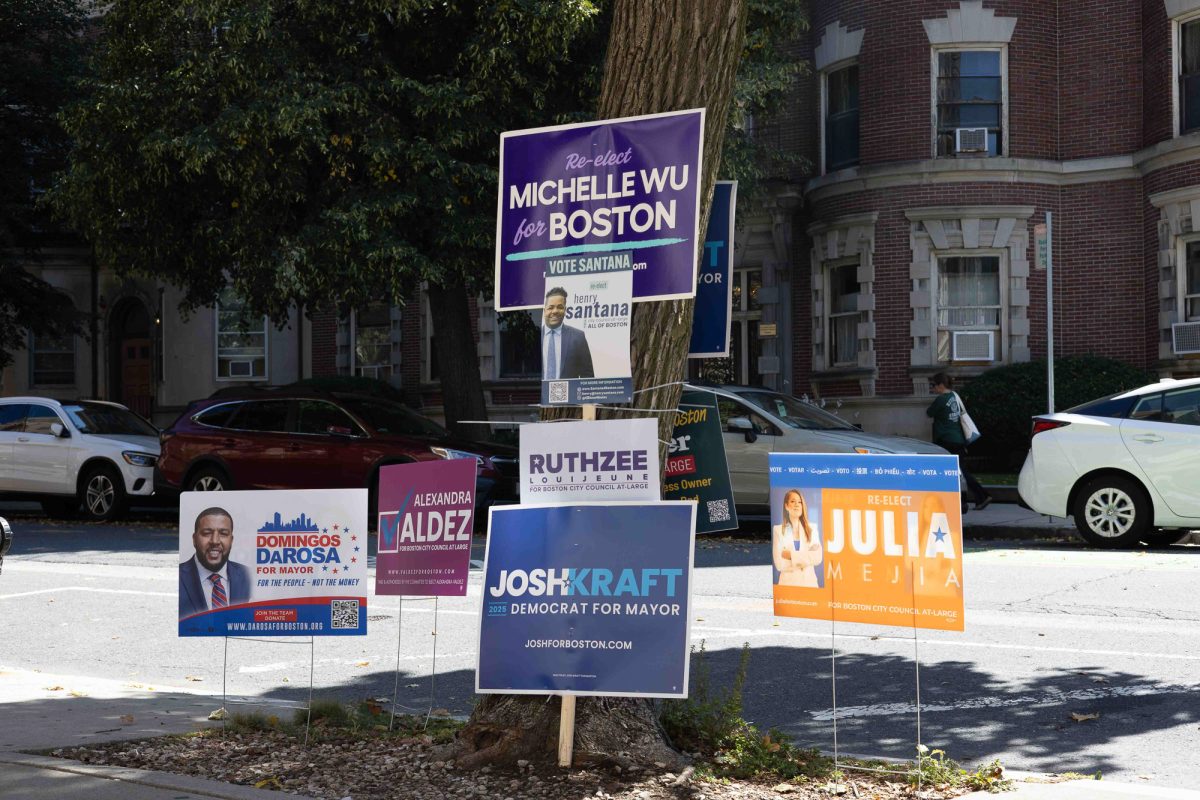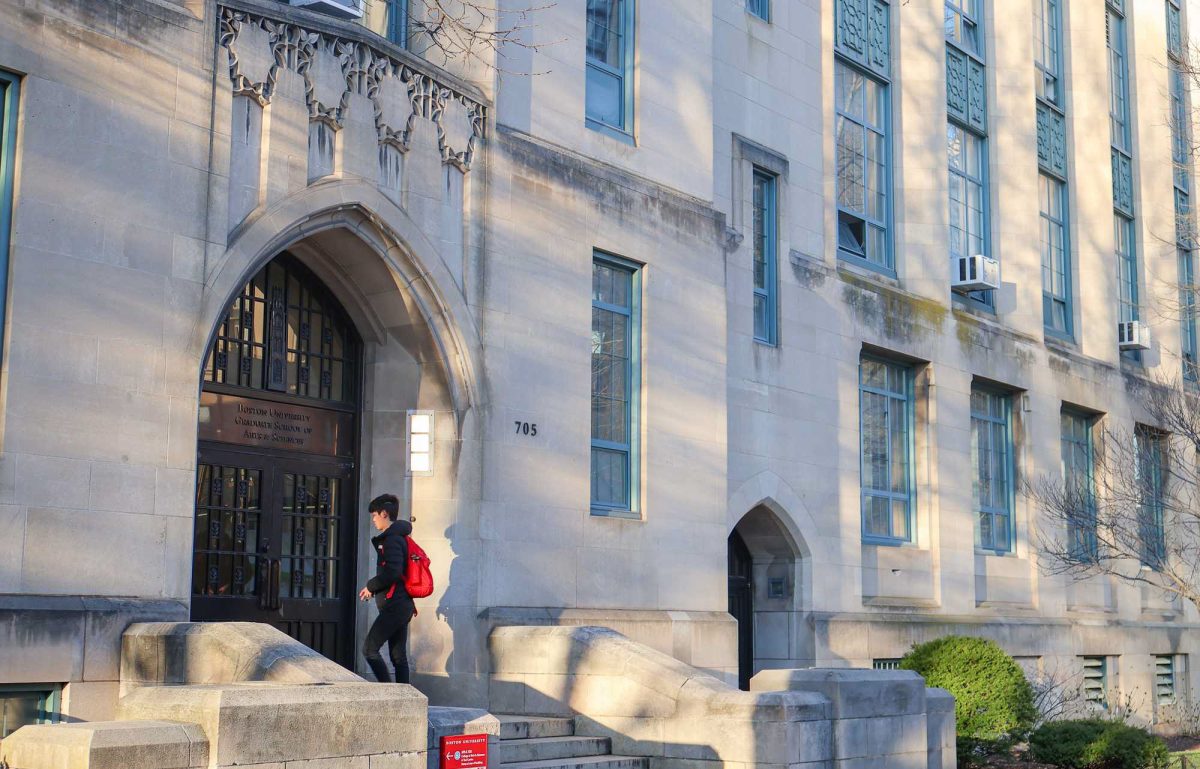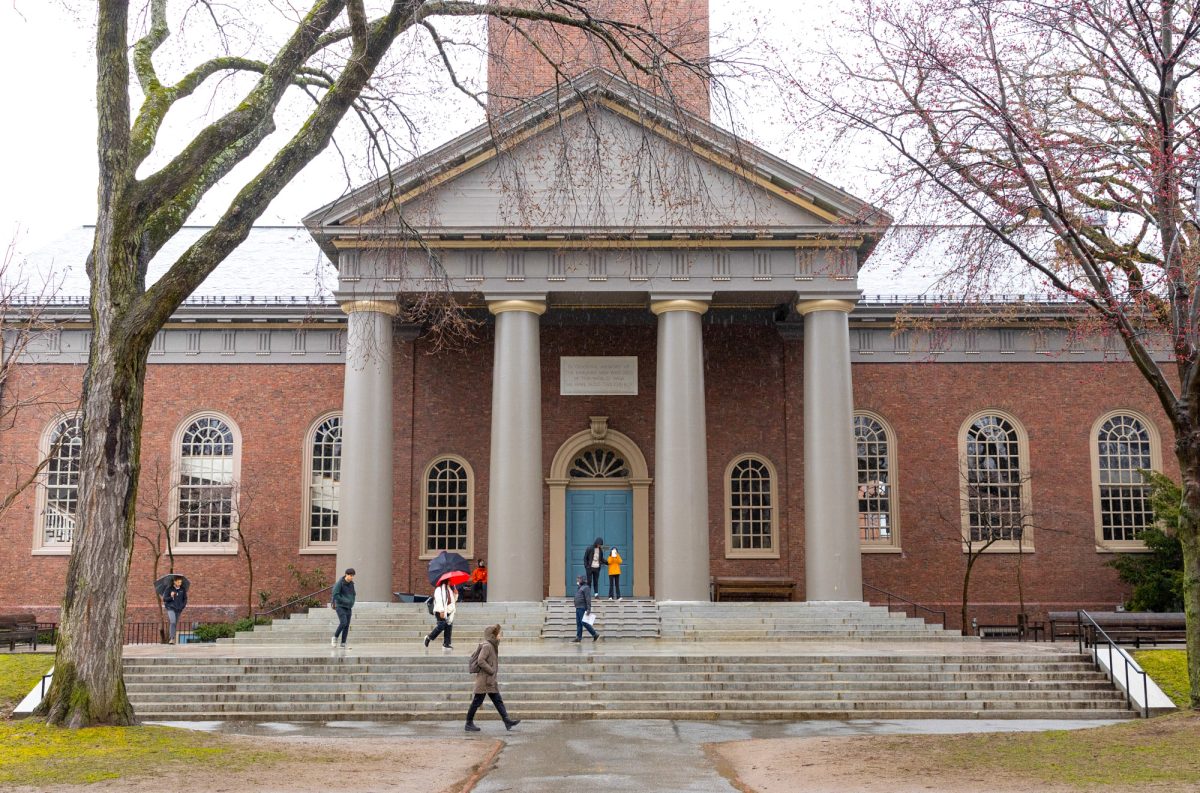Born in Fayetteville, N.C., raised in Houston and killed in Minneapolis, George Floyd’s death impacted Boston from more than 1,000 miles away.

His death sparked a season of unrest in the city and beyond. Protests began in late May, continuing throughout the summer before cooling off as the winter set in.
The Boston City Council began weighing options for police reform in early July, after Mayor Marty Walsh declared racism a public health crisis in June and vowed to reallocate 20 percent — $12 million — of the Boston Police Department’s overtime budget to citywide efforts to combat system racism.
Discussions on how to curb excess spending continue, with the Council’s Committee on Ways and Means slated to hold a hearing regarding police overtime in March.
Demonstrations continued into the Fall semester, with protestors rallying in the names of Floyd, Breonna Taylor, who was killed in March and Jacob Blake, who was shot and partially paralyzed in August. Although a few saw conflicts break out between activists and law officers, the majority remained peaceful.
The City filed an ordinance to create a new Office of Police Accountability and Transparency, tasked with reviewing the BPD’s internal investigations and civilian complaints in November.
The following month, the Massachusetts Legislature passed a major reform bill, banning chokeholds, creating a state-level oversight committee and allowing officers to report coworkers’ behavior. Gov. Charlie Baker signed it into law on New Year’s Eve.
But local activists still say more is necessary to curb police brutality and systemic racism in Boston.
Brock Satter, an organizer for Mass Action Against Police Brutality, which led a number of the summer’s protests, said defunding police, while important, is not a complete solution.
“The reform proposals have fallen short,” Satter said. “The central demands of the families most affected are not even really the central demands being put forward in most of these demonstrations right now.”
Satter added that reforms should make it easier for the families of those killed by police officers to take cases to trial — although he said he wasn’t sure how to effectively enforce such legislation.
“There’s already the laws in the books to indict,” he said, “it’s not like a legal barrier to what’s going on. It’s a political barrier.”
While Satter is optimistic moving forward, he said another surge of protests is “inevitable.”
“People thought it was over with Mike Brown,” he said. “But George Floyd proved that nothing has really changed.”
In its almost 400-year history, Boston has never been a stranger to protest.
“Protest has occurred over the entire course of Boston history,” said Peter Drummey, Stephen T. Riley Librarian at the Massachusetts Historical Society. “Much of it we can be very proud of, especially the protests of slavery in the 19th century. Sometimes it’s paradoxical. In 1919 … the Boston Police Force goes on strike. So you have, in a sense, the world turned upside down.”
The city’s earliest protests included organized, somewhat “ritualistic” riots that predated the American Revolution by nearly a century, Drummey said.
He added that, based on historic precedent, protests turning violent is unsurprising.
The Boston Massacre — often considered a spark that ignited the American Revolution — took place March 5, 1770: violence broke out between a crowd of Bostonians and nine British soldiers in front of the Customs House, on what is now State Street.
Claiming self-defense against unruly, young agitators, the soldiers fired into the crowd, killing a total of five men, Drummey said.
Among the casualties was Crispus Attucks, a man who was formerly enslaved, who would come to be seen as one of the Revolution’s first martyrs and a symbol of the Black struggle for freedom.
“Depending on how you look at it, you can certainly call it a police riot,” Drummey said. “This wasn’t a police force that was militarized, this was the actual military serving as essentially a police force.”
The soldiers were arrested and their trial delayed repeatedly. Captain Thomas Preston, who led the British militants received a verdict in the fall: not guilty. Of his eight soldiers, six were found not guilty.
Serena Zabin, author of “The Boston Massacre: A Family History,” added that while the soldiers involved in the massacre are often remembered as outsiders, many had been living in Boston with their families for years.
“By the time we get to the shooting, we have soldiers and civilians living quite literally cheek-by-jowl,” she said. “These people know each other.”
Zabin added that, according to her research, one of the soldiers involved in the shooting had married a local woman. Another was confronted by a neighbor.
“[The Massacre] doesn’t actually turn neighbors into strangers,” Zabin said. “I mean they’re horrified, but they don’t suddenly say ‘Oh, you’re not people anymore, you’re monsters.’”
She compared the soldiers’ presence to that of the National Guard — a balancing act between neighbors and enforcers.
Baker activated 1,000 members of the Guard in response to Black Lives Matter protests in September. The decision sparked controversy among residents, some of whom denounced the decision as an infringement on citizens’ right to protest.
Despite apparent parallels, Drummey and Zabin both warned against looking to history as a strict guide.
“It’s hard to know when we’re right about the past and its connections to the present,” Zabin said. “I think that the past is the foundation on which our future is built, and sometimes we need to be able to look back and see ‘where are the cracks?’ and ‘which pieces are strong?’”





















































































































